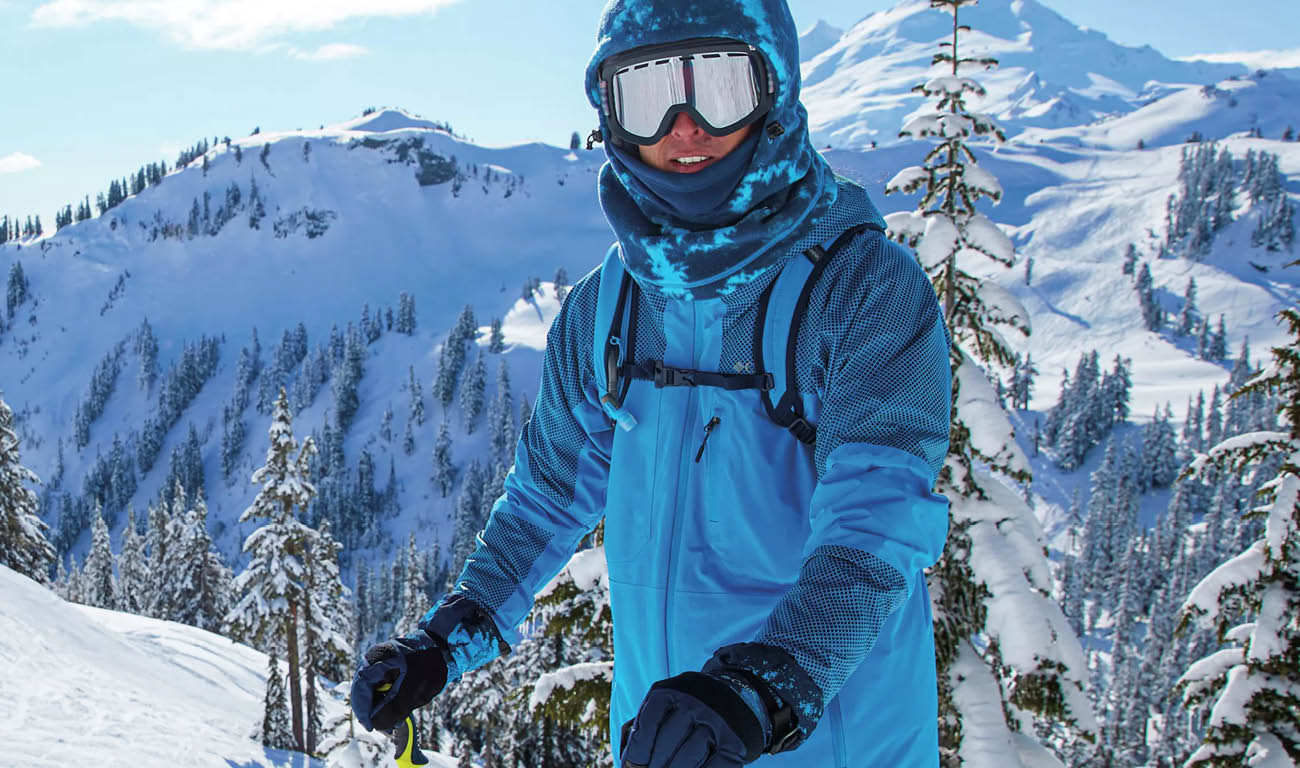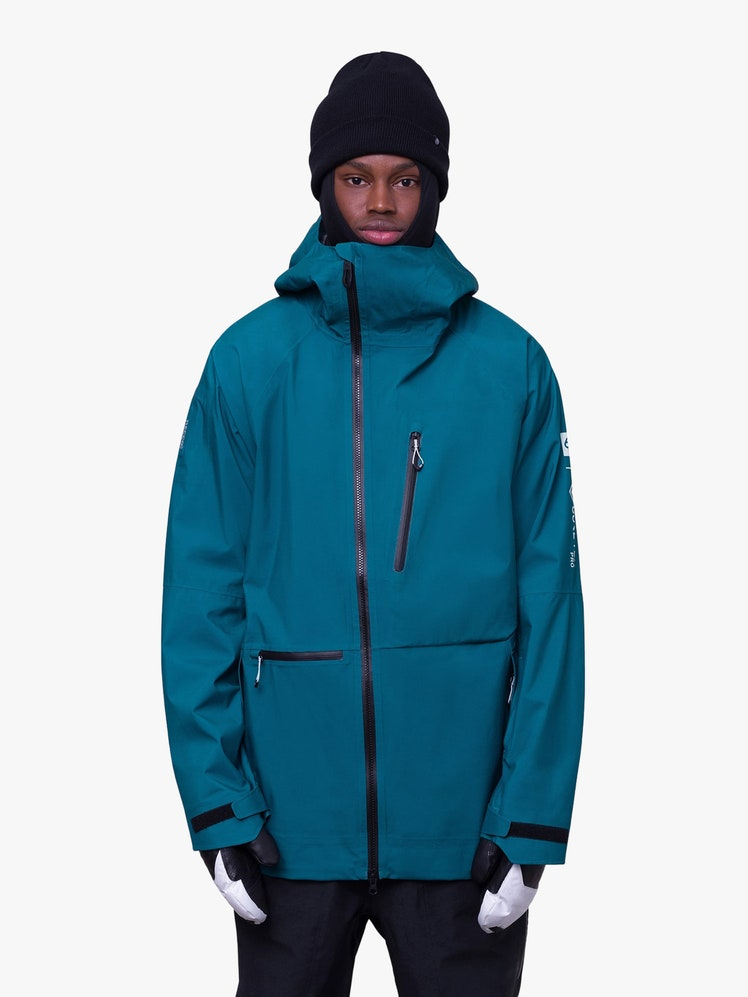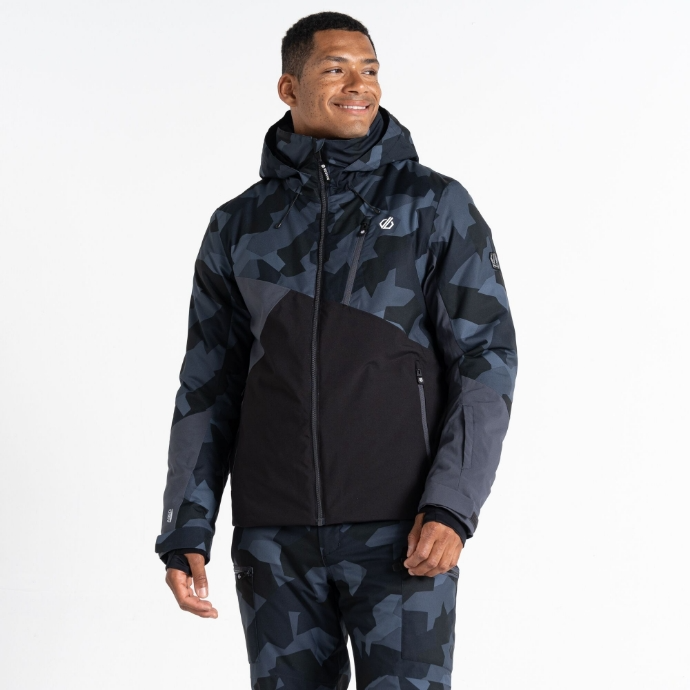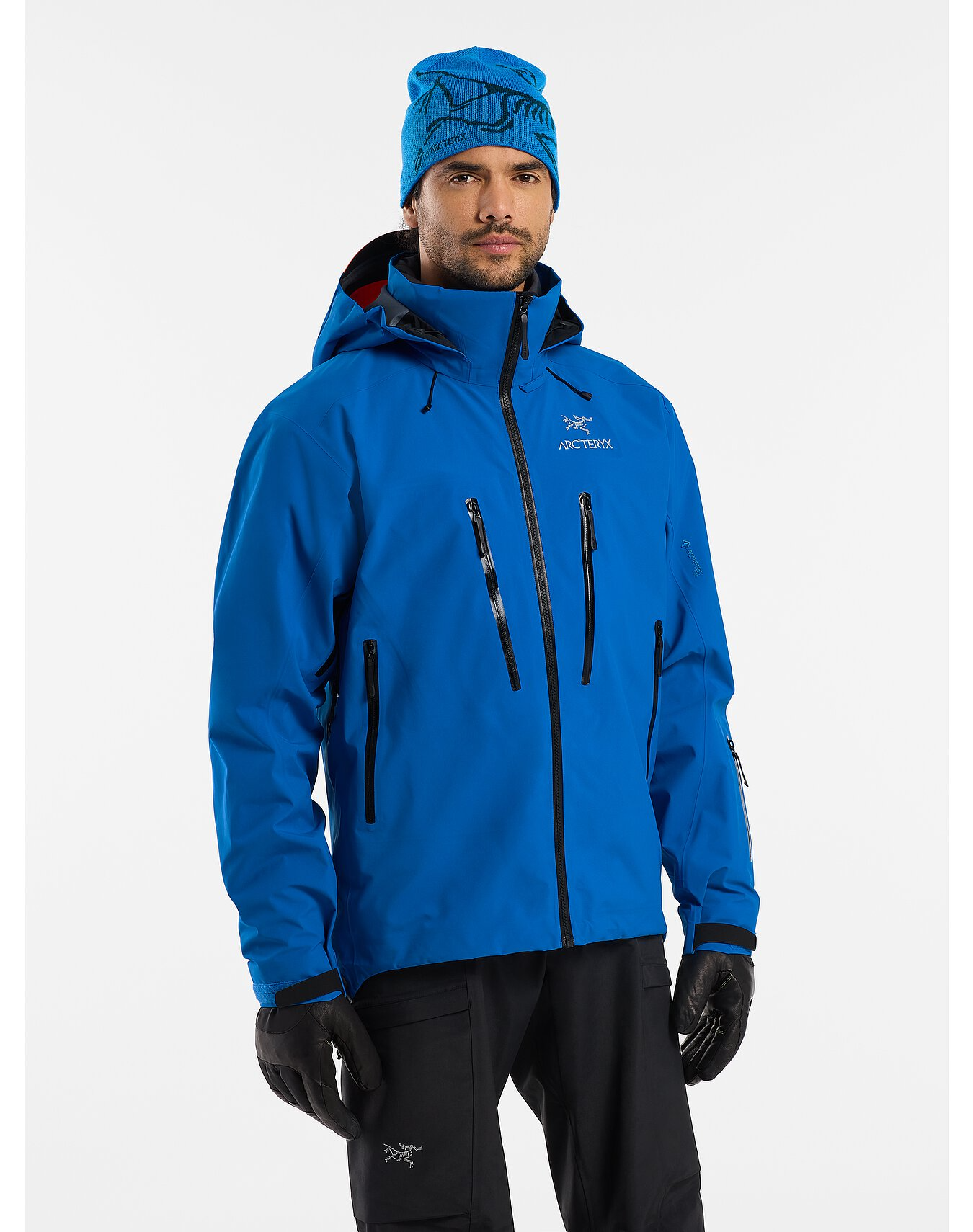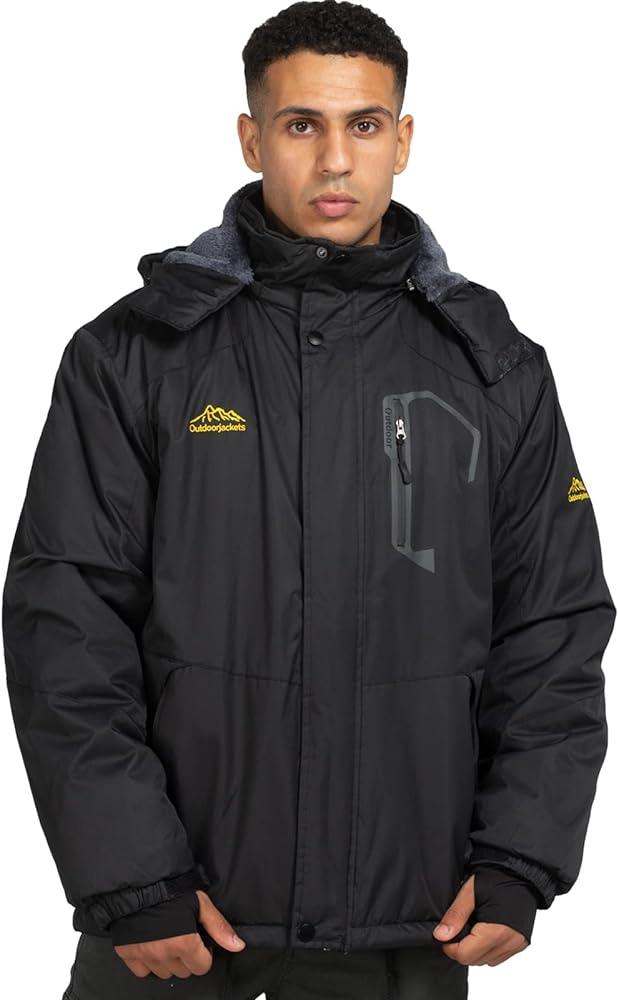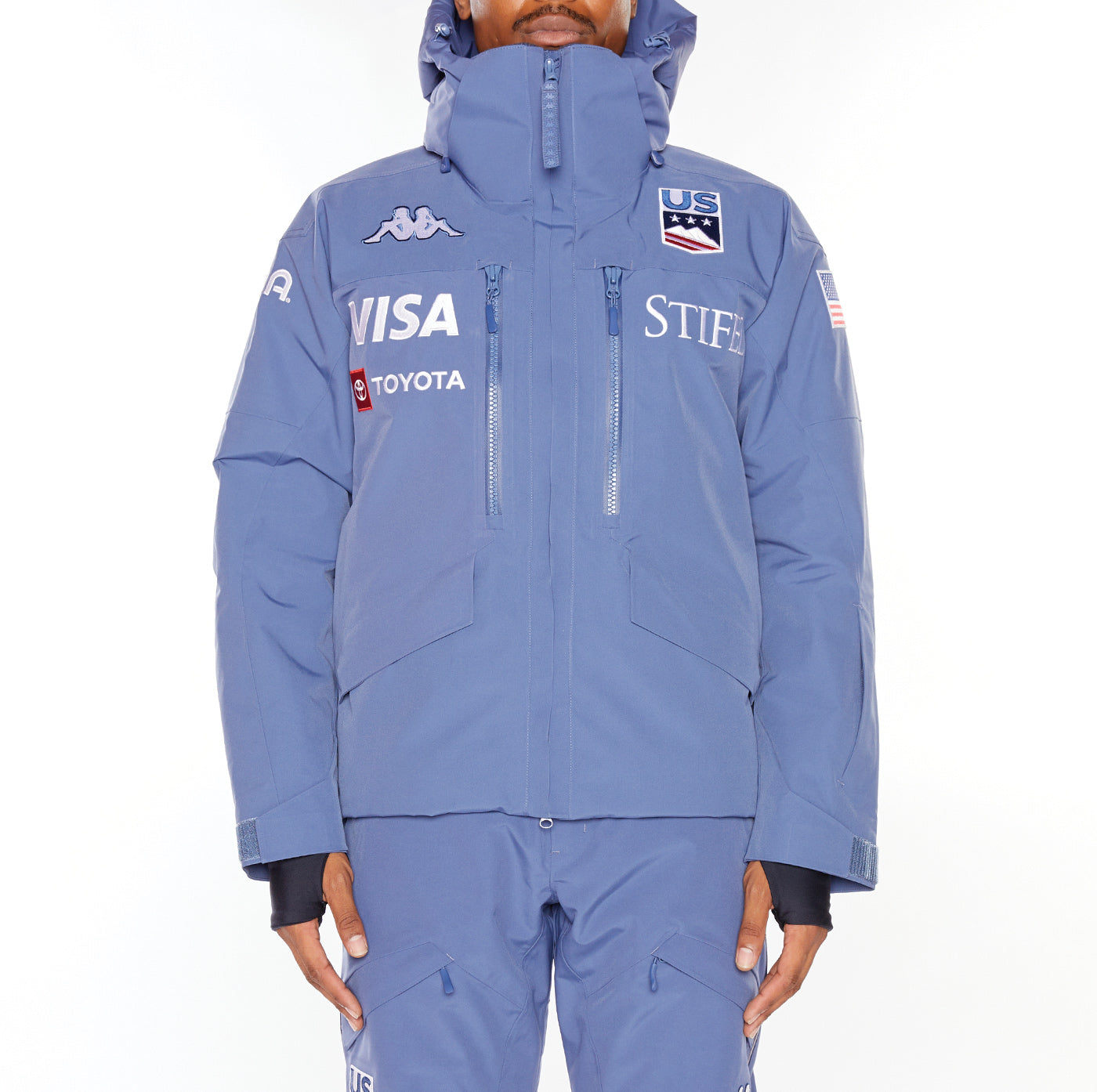Introduction
A ski jacket is an indispensable gear for anyone hitting the slopes. These jackets are designed to protect from the elements, keeping you warm and dry. Ski jackets also offer functional features to enhance your skiing experience. Understanding the importance of a ski jacket can help you make an informed decision when purchasing one.
Ski jackets play a crucial role in insulating your body from the cold. They are made with advanced materials that provide a balance of warmth and breathability. Many ski jackets use synthetic insulation, which retains heat effectively and dries quickly. Down insulation, known for its superior warmth-to-weight ratio, is also a popular choice among skiers. These materials ensure that you stay comfortable even in freezing temperatures.
Waterproofing is another essential feature of ski jackets. High-quality ski jackets are made from waterproof and breathable fabrics such as Gore-Tex. These fabrics prevent water from penetrating the jacket while allowing moisture to escape. This keeps you dry and comfortable, even in wet and snowy conditions.
Ski jackets are also designed with functionality in mind. They typically include multiple pockets for storing essentials like maps, snacks, and ski passes. Many jackets feature specialized pockets for goggles and media devices, adding to their convenience. Adjustable hoods, cuffs, and hemlines enhance the fit and help seal out the cold. Ventilation zippers provide additional airflow, allowing you to regulate your body temperature during intense activities.
The design and fit of ski jackets have evolved over the years. Modern ski jackets are available in various styles, from slim-fitting to more relaxed options. This variety ensures that you can find a jacket that suits your personal style and provides the desired level of mobility. A well-fitted ski jacket enhances your performance on the slopes, allowing for greater freedom of movement.
In summary, a ski jacket is an essential piece of gear for anyone venturing into snowy environments. Its insulation, waterproofing, and functional features ensure that you stay warm, dry, and comfortable. Investing in a high-quality ski jacket is crucial for an enjoyable and safe skiing experience.
Types of Ski Jackets
Insulated Ski Jackets
Insulated ski jackets are a popular choice for skiing enthusiasts. These jackets come with built-in insulation to keep you warm. The insulation material can vary, with synthetic fibers being the most common. Synthetic insulation is lightweight, quick-drying, and retains heat even when wet. This makes it a reliable option for winter sports.
Down insulation is another option, known for its superior warmth. It is lightweight and compressible, making it easy to pack and carry. However, down insulation loses its insulating properties when wet. Manufacturers often treat down feathers with a water-resistant coating to mitigate this issue.
Insulated ski jackets are ideal for cold conditions. They provide consistent warmth without the need for additional layers. This makes them convenient and easy to wear. These jackets are particularly useful for beginner skiers who may not be familiar with layering techniques.
Shell Ski Jackets
Shell ski jackets do not come with built-in insulation. Instead, they focus on providing waterproofing and breathability. Shell jackets are made from high-quality waterproof fabrics such as Gore-Tex. These fabrics keep water out while allowing moisture to escape. This makes shell jackets versatile and suitable for various weather conditions.
Shell ski jackets are ideal for advanced skiers who prefer a flexible layering system. They allow you to add or remove layers based on the weather and activity level. This adaptability makes them suitable for both cold and milder conditions. Shell jackets are lightweight and provide excellent mobility, enhancing performance on the slopes.
These jackets are also durable and can withstand harsh weather conditions. The lack of insulation makes them more breathable, preventing overheating during intense activities. Shell ski jackets often come with additional features like ventilation zippers and adjustable hoods, enhancing their functionality.
3-in-1 Ski Jackets
3-in-1 ski jackets offer versatility and adaptability. They consist of two separate layers: an outer shell and an insulated inner layer. These layers can be worn together or separately, providing flexibility for different weather conditions. The outer shell is typically waterproof and breathable, while the inner layer provides insulation.
These jackets are ideal for skiers who need versatility. They can adapt to changing weather conditions. For cold and wet conditions, wear both layers together. For milder weather, use the layers separately. The inner layer can double as a lightweight jacket for casual wear.
3-in-1 ski jackets are convenient and cost-effective. They eliminate the need to purchase separate jackets for different weather conditions. The ability to mix and match layers adds to their appeal. These jackets often include multiple pockets, adjustable features, and ventilation zippers, making them functional and practical.
Softshell Ski Jackets
Softshell ski jackets are designed for comfort and mobility. They are made from stretchy, breathable fabrics that provide a snug fit. Softshell jackets offer limited waterproofing but excel in breathability and flexibility. This makes them suitable for mild weather and high-intensity activities.
Softshell jackets are ideal for skiers who prioritize comfort and mobility. They allow for a full range of motion, enhancing performance. The breathable fabric prevents overheating, making them suitable for intense activities. However, they may not provide enough protection in extreme weather conditions.
These jackets are versatile and can be layered with other garments for added warmth. They are lightweight and comfortable, making them suitable for casual wear. Softshell ski jackets often come with additional features like adjustable cuffs and multiple pockets, enhancing their functionality.
Features to Consider When Choosing a Ski Jacket
Insulation
Insulation is a crucial factor when choosing a ski jacket. The type and amount of insulation determine the jacket’s warmth. Synthetic insulation is a popular choice due to its lightweight and quick-drying properties. It retains heat even when wet, making it reliable for winter sports.
Down insulation offers superior warmth-to-weight ratio. It is lightweight and compressible, making it easy to pack. However, down insulation loses its insulating properties when wet. Manufacturers often treat down with a water-resistant coating to mitigate this issue. This treatment enhances the durability and performance of down insulation.
The amount of insulation varies between jackets. Some jackets offer lightweight insulation for milder conditions, while others provide heavy insulation for extreme cold. Choose a jacket with suitable insulation based on your skiing environment and activity level.
Waterproofing
Waterproofing is essential for keeping you dry and comfortable. High-quality ski jackets are made from waterproof fabrics such as Gore-Tex. These fabrics prevent water from penetrating the jacket while allowing moisture to escape. This balance ensures that you stay dry and comfortable.
Waterproof ratings indicate the jacket’s ability to withstand water pressure. Higher ratings provide better waterproofing. Look for jackets with waterproof ratings above 10,000 mm for reliable protection. Waterproof zippers and sealed seams enhance the jacket’s waterproofing capabilities.
Breathability is equally important. Breathable fabrics allow moisture to escape, preventing overheating. This feature is crucial during intense activities. Choose a jacket with a high breathability rating to ensure comfort and performance.
Fit and Mobility
The fit and mobility of a ski jacket significantly impact your performance. Modern ski jackets are available in various styles, from slim-fitting to more relaxed options. A well-fitted jacket enhances your mobility and comfort on the slopes.
Consider the fit of the jacket when trying it on. It should provide a snug yet comfortable fit without restricting movement. Adjustable features like cuffs, hemlines, and hoods enhance the fit. These adjustments help seal out the cold and provide a customized fit.
Mobility is crucial for skiing. The jacket should allow for a full range of motion. Look for features like articulated sleeves and stretchy fabrics that enhance mobility. A well-fitted and flexible jacket ensures that you can move freely and perform at your best.
Functional Features
Functional features enhance the usability and convenience of a ski jacket. Multiple pockets provide storage for essentials like maps, snacks, and ski passes. Look for jackets with specialized pockets for goggles and media devices.
Adjustable hoods, cuffs, and hemlines enhance the fit and provide additional protection against the elements. Ventilation zippers allow for additional airflow, helping you regulate your body temperature during intense activities.
Other features to consider include powder skirts and wrist gaiters. Powder skirts provide an extra barrier against snow, keeping you dry. Wrist gaiters provide additional warmth and prevent snow from entering the sleeves.
Choose a jacket with features that suit your needs and preferences. Functional features enhance the overall skiing experience, making the jacket more versatile and practical.
Style and Aesthetics
While functionality is crucial, style and aesthetics also play a role in choosing a ski jacket. Modern ski jackets are available in various styles and colors, allowing you to express your personal style on the slopes.
Consider the color and design of the jacket. Bright colors and reflective details enhance visibility, contributing to safety. Classic designs offer a timeless look, while modern styles provide a contemporary appeal.
Choose a jacket that complements your overall ski gear. A well-designed and stylish jacket enhances your confidence and enjoyment on the slopes. The right combination of functionality and aesthetics ensures that you look and feel great while skiing.
Caring for Your Ski Jacket
Cleaning and Maintenance
Proper cleaning and maintenance are essential for preserving the quality and performance of your ski jacket. Regular cleaning helps remove dirt, sweat, and residues that can affect the fabric’s waterproofing and breathability.
Follow the manufacturer’s cleaning instructions. Most ski jackets are machine washable, but use a gentle cycle and mild detergent. Avoid using fabric softeners, bleach, or harsh chemicals, as they can damage the fabric. After washing, rinse thoroughly to remove any detergent residues.
For jackets with down insulation, use a front-loading washing machine and a down-specific detergent. Tumble dry on low heat with clean tennis balls to restore the loft of the down feathers. This process ensures that the jacket retains its insulating properties.
Restoring Waterproofing
Over time, the waterproofing of a ski jacket can diminish. Restoring the waterproofing helps maintain the jacket’s performance. Use a spray-on or wash-in waterproofing treatment designed for technical fabrics.
Before applying the treatment, clean the jacket thoroughly. Apply the treatment according to the manufacturer’s instructions. Allow the jacket to dry completely before wearing. Regularly restoring the waterproofing ensures that your jacket remains water-resistant and breathable.
Storing Your Jacket
Proper storage is essential for maintaining the quality of your ski jacket. When not in use, store the jacket in a cool, dry place. Avoid exposing it to direct sunlight or extreme temperatures, as these can damage the fabric.
Use a breathable garment bag to protect the jacket from dust and moisture. Avoid using plastic bags, as they can trap moisture and cause mold or mildew. If possible, hang the jacket on a padded hanger to maintain its shape and prevent creases.
Before storing the jacket for an extended period, ensure it is clean and dry. Proper storage helps preserve the integrity and performance of the jacket, ensuring it remains in good condition for future use.
Handling Wear and Tear
Despite their durability, ski jackets can experience wear and tear over time. Handling minor issues promptly can help maintain the jacket’s quality and extend its lifespan.
Inspect the jacket regularly for signs of damage, such as loose seams or minor tears. Use a needle and strong thread to repair small tears, or take the jacket to a professional tailor for larger repairs. Regularly check the zippers and hardware to ensure they remain functional.
Restoring the waterproofing and reapplying treatments as needed can help maintain the jacket’s performance. Proper care and maintenance ensure that your ski jacket remains in excellent condition, providing reliable protection and comfort.
Conclusion: The Vital Role of a Ski Jacket
A ski jacket is more than just a piece of clothing. It is an essential gear that provides protection, comfort, and functionality on the slopes. With various types and features available, choosing the right ski jacket can significantly enhance your skiing experience.
Understanding the importance of insulation, waterproofing, fit, and functional features can help you make an informed decision. Proper care and maintenance are crucial for preserving the quality and performance of your ski jacket. Regular cleaning, restoring waterproofing, and handling wear and tear ensure that your jacket remains in excellent condition.
Investing in a high-quality ski jacket is a wise decision for anyone venturing into snowy environments. The right jacket provides the necessary protection and enhances your overall enjoyment on the slopes. Whether you’re a beginner or an experienced skier, the right ski jacket will keep you warm, dry, and comfortable, allowing you to focus on the thrill of skiing.
Embrace the joy of skiing with confidence, knowing that you have the right gear to support you. A well-chosen and well-maintained ski jacket ensures that you can fully enjoy the beauty and excitement of the winter season. Investing in a ski jacket is an investment in your comfort, safety, and overall skiing experience.
